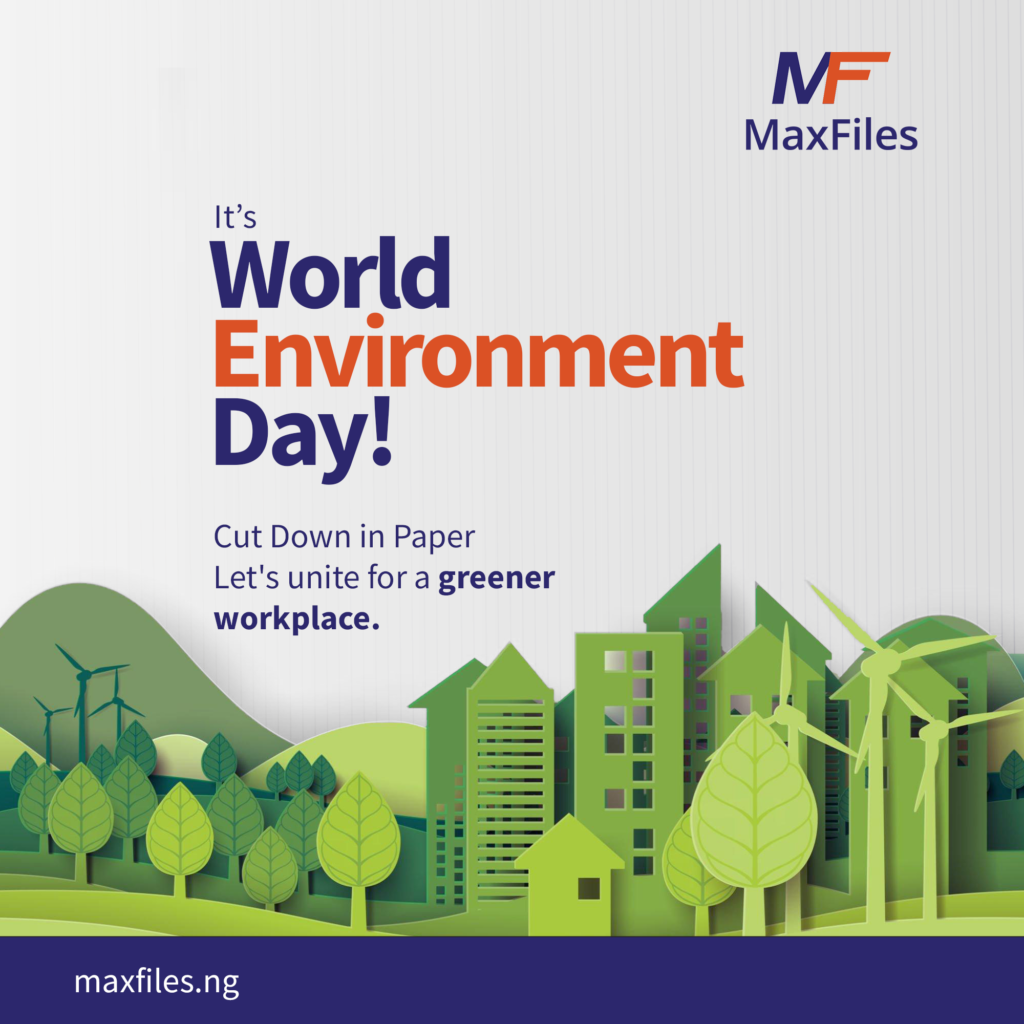In today’s digital age, the need to prioritize environmental sustainability is more critical than ever. One area where businesses can make a significant impact is by reducing paper usage. Excessive paper consumption not only contributes to deforestation but also results in waste generation and an increased carbon footprint. In this blog post, we’ll explore the environmental consequences of paper usage and delve into how Electronic Document Management Systems (EDMS) and workflow automation software, like MaxFiles, can help businesses minimize their paper impact and embrace a more sustainable future.
The Environmental Consequences of Paper Usage
Deforestation
The paper industry heavily relies on trees, leading to widespread deforestation and habitat destruction. According to Formstack, over 40% of wood pulp goes toward the production of paper. This loss of forests contributes to climate change and affects biodiversity.
Resource Consumption
Paper production requires vast amounts of water, energy, and chemicals. This puts a strain on natural resources and contributes to pollution and greenhouse gas emissions.
Waste Generation
Paper waste accounts for a significant portion of landfill waste. Decomposing paper in landfills produces methane, a potent greenhouse gas.
Carbon Footprint
The entire lifecycle of paper, from production to disposal, involves various energy-intensive processes that emit greenhouse gases. This contributes to climate change and exacerbates environmental challenges.
The Role of EDMS and Workflow Automation Software
Digital Document Storage
Electronic Document Management Systems (EDMS) eliminate the need for physical paper storage by providing a centralized digital repository for documents. This reduces reliance on filing cabinets, saves physical space, and cuts down on paper consumption.
Paperless Workflows
Workflow automation software like MaxFiles enables businesses to digitize and automate their processes, eliminating the need for manual, paper-based tasks. This transition to paperless workflows not only reduces paper waste but also enhances efficiency.
Document Collaboration
EDMS facilitates seamless collaboration among team members, enabling them to share, review, and edit documents digitally. This feature of document management applications eliminates the need for printing multiple copies and reduces paper usage.
Electronic Signatures
With EDMS, businesses can embrace electronic signatures, eliminating the need for printing and physically signing paper documents. This feature streamlines processes, reduces paper waste, and expedites workflows.
Improved Document Tracking and Accessibility
EDMS allows for easy document search and retrieval, eliminating the need for physical file searching. This saves time, reduces paper usage, and improves overall productivity.
Reporting and Analytics
EDMS provides insights into document usage, printing patterns, and paper consumption. This data allows businesses to identify areas for improvement, optimize processes, and further reduce paper usage.
The Benefits of Workflow Automation and Business Process Automation
Implementing workflow automation and business process automation tools, such as MaxFiles, offers numerous advantages. These tools facilitate business process management and IT by streamlining operations, reducing manual tasks, and enhancing overall efficiency. The benefits of workflow automation include increased productivity, improved accuracy, and significant cost savings. By adopting workflow automation best practices, businesses can ensure that their processes are not only efficient but also environmentally sustainable.
Workflow Automation Examples
Examples of workflow automation include automated invoice processing, customer service ticketing systems, and digital HR onboarding processes. These examples demonstrate how businesses can leverage automation to reduce paper usage and improve operational efficiency.
Advantages of Business Process Automation
Business process automation (BPA) offers several advantages, including reduced operational costs, improved compliance, and enhanced scalability. The benefits of business process automation are evident in various industries, where companies have successfully transitioned from manual to automated processes, thereby achieving greater efficiency and sustainability.
Digitalization and Business Process Automation
Digitalization and business process automation go hand in hand, providing businesses with the tools they need to transform their operations. Process automation benefits include streamlined workflows, reduced errors, and increased transparency. By embracing digitalization, businesses can ensure they remain competitive while also contributing to environmental sustainability.
Conclusion
The adverse environmental impact of paper usage cannot be ignored. By embracing Electronic Document Management Systems (EDMS) and workflow automation software like MaxFiles, businesses can significantly reduce their paper consumption, contributing to a more sustainable future. Digital document storage, paperless workflows, electronic signatures, and improved accessibility are just a few ways EDMS and workflow automation software can help businesses minimize their paper impact. Let’s prioritize environmental sustainability by harnessing the power of technology and embracing a paperless future. Together, we can make a difference.












